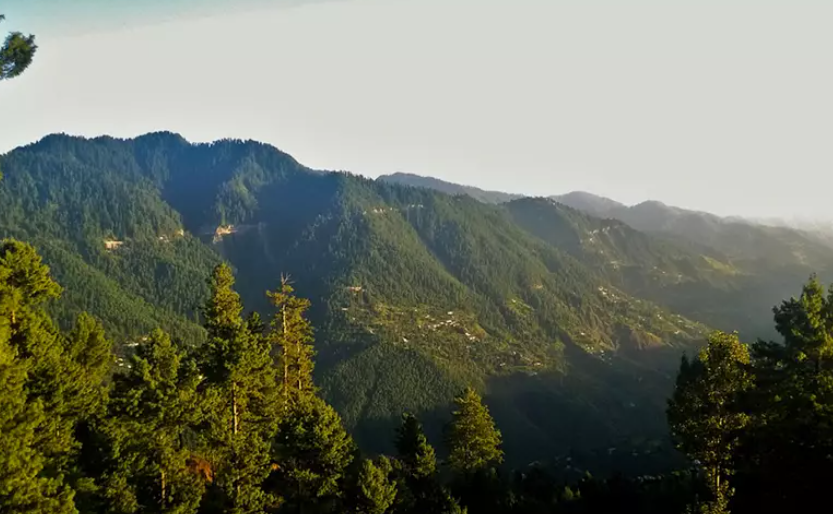Best Pakistan National Parks You Must See Once in Your Life
Explore breathtaking parks like Deosai, Khunjerab, Hingol, Margalla Hills, and Ayubia—offering unmatched wildlife, landscapes, and adventures for nature lovers.
Pakistan is a geographically remarkable country, home to the world’s second-tallest and most difficult-to-climb mountain, the Thar Desert, as well as the most linguistically and culturally varied population. In a similar vein, one such location that everyone should see at least once in their lifetime is Pakistan national parks.
READ MORE: Best Local Food Points in Lahore
Pakistan’s National Parks: A Treasure of Entertainment
These ten breathtaking national parks in Pakistan are worth visiting and will persuade you to plan a trip there for your upcoming vacation.
National Park Deosai Astore
Between Astore Karmang and Skardu lies Deosai National Park, home of Sheosar Lake. The Balti language gives Deosai its name, which translates to “the land of giants.” With an elevation of 11447 feet above sea level, Deosai, located in China, is the second-highest plateau in the world after Chang Tang.
Alpine trees encircle it. In the spring, a diverse array of wildflowers and butterflies fill the area. The Brown Bears are also from Deosai. Deosai, a travelogue authored by Mustansar Hussain Tarar, is a book worth reading because of its wonders and beauty.
National Park of Khun Zerav (Khunjerab)
This Persian verse says, “Come and see me soak in blood if you wish to see a beautiful scenery.” Often spelled incorrectly as Khunjerab National Park, this was also the idea of former Prime Minister ZA Bhutto, who said that it ought to be a national park upon visiting it. The word for streams of blood in the Wakhi language is Khun Zerav.
Situated in the Gilgit-Baltistan region beside the Khunjerab Pass, this national park is the third largest, spanning 2270 square kilometers. Numerous endangered animals, like the Himalayan Ibex and Marco Polo sheep, call it home. It is among Pakistan’s most significant alpine biodiversity areas. China’s Taxkorgan Natural Reserve is next to the park. Encircled by massive mountains, it resembles a bowl of nature.
Park Ayubia National
The Hazara division’s central core is home to this protected region, which is a national park. It is located in Dunga Gali and is around 35 miles from Abbottabad. It has been preserved as a resort despite being surrounded by four towns and seven villages, including the well-known Thandiani and Meranji.
Every year, 0.5 million people visit this location in search of the refreshing and comfortable atmosphere. The largest example of a Himalayan moist temperate forest, it offers breathtaking views of massive subtropical pine woods. The five-kilometer chairlift, placed in the middle, transports visitors to a nearby summit for a view of the surrounding forested hills. Thus, you absolutely must visit this densest trip resort if you have some free time.
National Park of the Broghil Valley
The second-highest lake in Pakistan is found in the Broghil National Park, which is roughly 250 kilometers from Chitral, KPK. The 31st-highest lake in the world is Qurumber Lake. The highest pass in the world is the Broghil Pass, which connects the Afghan province of Badakhshan with the Hindu Kush region.
It resembles a verdant desert due to the expansive, treeless green spaces. It is home to Siberian and Pamirian birds in the winter, and from July 15 to July 17, it holds an annual event when local sports like polo and yak races are played. Therefore, nothing will be better than this broghil park if you get the chance to go somewhere fun and adventurous in the summer or winter.
National Park of Margalla Hills
The Margalla Hills, located just above Pakistan’s capital, offer breathtakingly beautiful and inspiring scenery. It is thought of as the massive Himalayan mountain range’s footsteps. The Margalla Hills are the opposite of Dostoevsky’s Saint Petersburg because of their breathtaking hail that pours down during the monsoon.
It is worth mentioning that the abundance of wildlife, particularly Barking Deer, Indian Leopard, and Gray Goral, is captivating. nearby are 40 million-year-old rock formations nearby, which are said to have formerly been beneath the coast. Those who are unable to go far should make a once-in-a-lifetime visit to this national park. The base of the well-known Monal restaurant in Pakistan is located in this national park.
Park Hingol National
Hingol National Park, one of Pakistan’s largest national parks with an area of 1650 sq km, is situated along the Makran coast in southwest Balochistan, 190 kilometers from Karachi. The greatest diversity of birds and animals can be found near the estuary of the Hingol River.
The imposing granite structures resemble the identical twins of ancient Egyptian pyramids. The beautiful Kund Malir beach, Princess of Hope, mud volcanoes, and Hinge Mata shrines all greet guests like royalty. It is a place where everyone who is eager to witness the wonders should go at least once in their lifetime.
National Park Kirthar
This enormous crabby park, dubbed Ranikot, is the largest fort in the world and is situated between Jamshoro and Karachi. It began operations in 1974, during ZA Bhutto’s administration. It is the second-largest national park after Hingol National Park, covering an area of 3072 sq km. Kirthar Park presents an extraordinary and one-of-a-kind scenery full of scenic beauty and cultural richness.
There are two wildlife sanctuaries in the area (2014): Hab Dam Wildlife Sanctuary and Mahal Kohistan Wildlife Sanctuary. The area is home to a diverse array of animals, including the renowned leopards, strip hyenas, wolves, ratites, and urials.
Park Chinji National
There’s a good probability the person who wrote Namak Ishq Ka, Tere Ishq Ka was from this region surrounded by salt. Everything that belongs here has salt at its foundation, including the world’s largest mines, which also contain buildings, minarets, and mosques. This region, which is 2231 feet high, is well-known for its igneous rocks and rock salt.
The most ornate Khewra salt mines are the reason why about 0.2 million visitors come here. It is governed by the ICUN and was designated as a national park in 1987. It also draws zoologists to observe them close to extinct Urals and biologists to study the xeric shrublands. This miracle of salt can be visited if you are unable to travel far from the Potohar region or central Punjab.
Park Lal Suhanra National
Located 35 kilometers from Bahawalpur, this reserve habitat spans 620 square kilometers in central Pakistan. Many different types of flora and animals can be found there due to the diversity of the topography, which includes ponds, forests, and deserts.
The government of Punjab is attempting to turn it into a safari park. Additionally, it functions as a conversation plant with which native animals are interacting, such as blue bulls and blackbucks.
Chiltan National Park at Hazarganji
This national park, well-known in legend as the location of hundreds of treasures buried beneath its surface, is home to juniper, almond, and ash trees.
It is situated in the Mastung district, roughly 20 km southwest of Quetta, in the Sulaiman ranges, which have habitats that are both desert and woodland. It is the sole home of the Chiltan Markhor, a species that is almost extinct.


Comments are closed, but trackbacks and pingbacks are open.